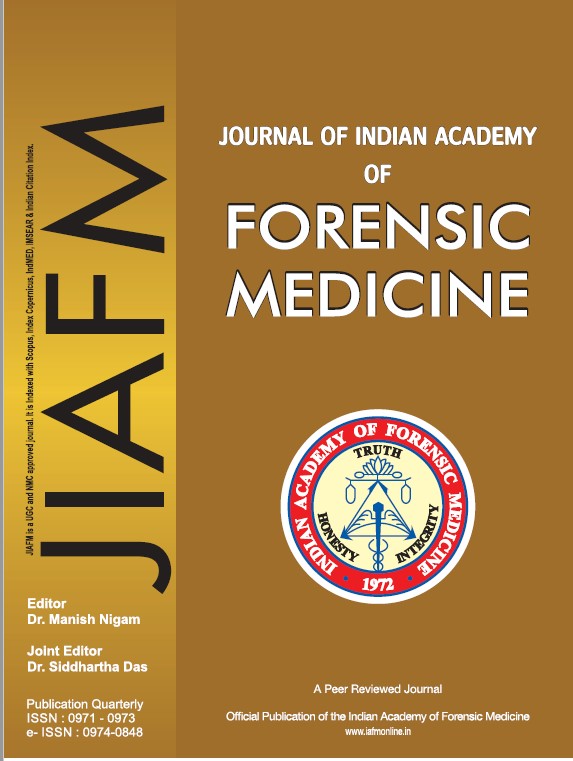Sex Determination using Computed Tomography of the Last Thoracic Vertebrae in Indian (Bengali) Population
Keywords:
Forensic, Thoracic vertebrae, CT scan, Sex DeterminationAbstract
Identification of skeletal remains has been challenging for forensic anthropologists, especially during disasters. 92 subjects, comprising 59 males and 33 females in the age bracket of 10 and 88, were scanned using a CT scan in the Indian Bengali population. Wilk's lambda for the model is 0.621 which signifies a good discriminating power of the model. The discriminant function equation (table 4) is, Df=0.350 × EPWu -0.039 × EPWI +0.045 × SPL+0.147 × SPH-11.357.Overall 75% of the sample was correctly classified into their group by this model. This study showed a significant difference in measurements of the last thoracic vertebrae for sex discrimination, so this can suggest that the last thoracic vertebra is a useful tool for sex identification, especially in cases of mass disaster where other bones may have been destroyed as an adjunct to other sex identifying tools in crime or death scene for Indian (Bengali) population


